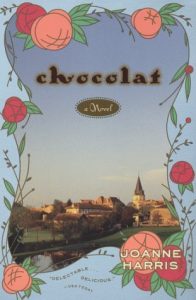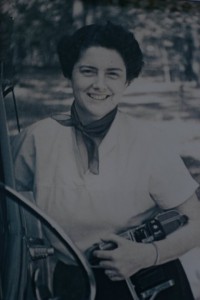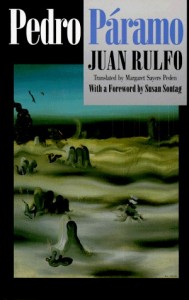 Some writers have the power to immerse the reader in a world so forcefully that your emotions are surrendered to them and your wellbeing is completely at their mercy. That is the experience I was hoping for Love by Péter Nádas.
Some writers have the power to immerse the reader in a world so forcefully that your emotions are surrendered to them and your wellbeing is completely at their mercy. That is the experience I was hoping for Love by Péter Nádas.
I picked this book up because I deeply enjoyed A Book of Memories, my next book is about love (so I’m reading a lot about it), and it’s a novella, a form I adore. Love wants to immerse the reader in its world—the first line is dialogue, “’Gimme a pillow’” and immediately you are inside this moment in a relationship where they are about to have sex and then he will leave her. It’s a tantalizing cliff and at first I enjoyed watching from the edge of my seat.
Overlapping Time
Early on, Nádas describes the scene in a series of staccato sentences that portray each moment of action in a way that would make any writing teacher cringe (though the influence of Proust is strong). Except that it works. Something about the way the tense shifts between sentences and he jumps from sight to sight and back again makes you feel as though you are present in the room for a familiar scene that has been played out many times.
“At the table I was sitting in the armchair, half naked. All the paraphernalia on the table. A pack of cigarettes. Grass in a small plastic bag. Scissors, matches. A clean sheet of paper. She takes a cigarette out of the pack, then a matchstick from the matchbox. With the match she scoops out the tobacco, careful not to graze the fine paper shell of the cigarette. I am not leaning back. My shirt is on the backrest of the armchair, her green dress spread out over my shirt. She likes to walk around naked; it’s hot. The tobacco is spilled out on the sheet of paper. Her breasts tremble imperceptibly, following with a slight delay the rhythm of her movements…”
Nádas later recreates snippets of this moment so that you feel stranded in a series of overlapping moments. You feel like you are watching many versions of the same scene as it has happened over and over and the writer has overlapped them to show how the relationship is suspended in one place. It’s amazing.
Show Don’t Tell
But then the book changes. As the narrator is mired inside this moment, he starts to go mad. The luscious repetition that felt like it was describing a state of being becomes mired in its own inability to move forward. The narrator is standing in the middle of the room and he feels the draw of jumping off the balcony and he is thirsty. Time passes or does not pass. And we are entirely in the narrator’s head.
“If, then, I exist only as a fragment of my former, whole self, but this fragment now seems to be between my two potential human capacities. Where? Where my story is stripped down to its bare essentials: between existence and nonexistence. That’s where I am conceptually…”
The passage was intellectually interesting, but it left me cold emotionally. Which was weird in the middle of this tortured moment in a love affair. Here’s how António Lobo Antunes shows stillness:
“Agitated on the inside by disgust but with nothing showing in their immobile features, absolutely still, as unmoving as those of landscapes, of photographs, of summer sunsets, nothing showing in their ever-horizontal features, decomposing silently in the Formica chairs.”
Rather than thinking words like “exist” and “capacities,” Antunes uses emotive words like “agitated,” “disgust,” and “decomposing.” Okay, that last one may not be emotive but it surely is evocative. I wanted badly for Nádas to get out of his head and let me experience the moment. But maybe that’s why the narrator was mired in his situation in the first place. But I tired of standing at the edge of the cliff with him.
Conclusion
This book taught me a lot of things. First, though I grew up in an intellectual household and often revert to a thinking mode of speech, what has the power to move me is emotion and I should be using more of that in my writing. Second, just because I like a writer does not mean I will like all of their work. And third, it’s time to start looking within when writing my next book. The sources of inspiration are endless, but I know what I want and what I need and the time to start working is now.
Happy NaNoWriMo! Are you balancing inspiration and creation better than I am?
If this review made you want to read the book, pick up a copy of Love from Bookshop.org. Your purchase keeps indie booksellers in business and I receive a commission.
 Some nights I miss Baba more than I can bear. I’m surrounded by wonderful memories of my grandmother and I know she was ready to die. Still, although it’s been nearly two years since she passed away, the grief sneaks up on me. This happened recently as I encountered the character of Armande Voizin while reading Chocolat by Joanne Harris. This review contains spoilers…
Some nights I miss Baba more than I can bear. I’m surrounded by wonderful memories of my grandmother and I know she was ready to die. Still, although it’s been nearly two years since she passed away, the grief sneaks up on me. This happened recently as I encountered the character of Armande Voizin while reading Chocolat by Joanne Harris. This review contains spoilers… Most of us do not get to control the terms of our own exit, but I’m rewriting the story of Baba’s death. After that weekend of parties, she went home and ate a gallon of butter pecan ice cream. She snuggled up with her husband of 65 years and said goodnight one last time.
Most of us do not get to control the terms of our own exit, but I’m rewriting the story of Baba’s death. After that weekend of parties, she went home and ate a gallon of butter pecan ice cream. She snuggled up with her husband of 65 years and said goodnight one last time. Pedro Páramo is the spookiest book I’ve read in a long time. Juan Rulfo created a world where the living interact with the dead in such a way that the reader can’t immediately be certain who is living and who is dead, which creates this suspicion that everyone is dead. Because the stories told about the lives of the dead are much more detailed and intricate than the stories of Juan Preciado, who is alive at the start of the book, the world of the dead seems more real than the world of the living.
Pedro Páramo is the spookiest book I’ve read in a long time. Juan Rulfo created a world where the living interact with the dead in such a way that the reader can’t immediately be certain who is living and who is dead, which creates this suspicion that everyone is dead. Because the stories told about the lives of the dead are much more detailed and intricate than the stories of Juan Preciado, who is alive at the start of the book, the world of the dead seems more real than the world of the living.